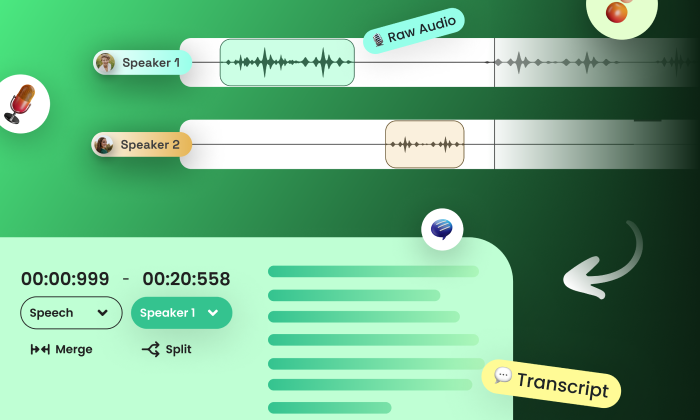Why is my ASR model failing to recognize medical terminology in doctor-patient conversations?
ASR
Healthcare
Speech Recognition
Understanding why your Automatic Speech Recognition (ASR) model struggles with medical terminology in doctor-patient conversations requires focusing on several key aspects. Let's explore these factors and how they can be addressed to improve your model's performance in recognizing medical language.
Why ASR Models Struggle with Medical Terminology Recognition
Medical terminology is unique in its complexity and specificity, often including jargon, acronyms, and context-specific phrases. Unlike common language, medical vocabulary demands a deep understanding of context and usage, which can be challenging for ASR systems. This complexity can lead to numerous recognition errors, especially in dynamic environments like hospitals where conversations might include overlapping speech and emotional nuances.
The Importance of Contextual Training Data
The effectiveness of your ASR model heavily depends on the quality and context of the training data. If your model was trained on general datasets without medical context, its ability to recognize specialized vocabulary will be limited. This is where the Doctor-Patient Conversation Speech Dataset can make a significant difference. By providing unscripted, realistic conversations that mimic real-world clinical interactions, this dataset ensures a training environment rich in medical terms and the natural flow of human dialogue. Such datasets are crucial for models to generalize effectively to actual doctor-patient conversations.
Impact of Acoustic Conditions and Speaker Diversity on ASR Performance
Doctor-patient interactions often occur amidst background noise, various accents, and differing speech patterns. If your ASR model was trained on a limited set of audio samples, it may falter under the diverse acoustic conditions typical of medical settings. Utilizing datasets like the one provided by FutureBeeAI, which incorporates a wide range of speakers, environments, and dialects, can significantly enhance the model's adaptability. This diversity is essential for accurate recognition in real-world medical applications.
Annotation Quality and Terminology Coverage
The way your training data is annotated plays a crucial role in how well your model recognizes medical terminology. If annotations lack depth or fail to capture medical context, your model may struggle with term associations. Speech & Audio Annotation ensures high-quality annotations with input from medical professionals, enhancing the contextual relevance of terminology. This includes tagging symptoms, medications, and diagnoses, which enriches the model's understanding of healthcare language.
Fine-tuning Language Models for Specialty Domains
Language models are integral to ASR systems, especially for context prediction and error correction. If your model's language model is not fine-tuned to the medical domain, it may misinterpret terms or fail to recognize them. Fine-tuning the language model using domain-specific corpora can greatly improve its ability to accurately predict and recognize medical terms. This involves training on specialized datasets that reflect the language and terminology used in healthcare settings.
Common Pitfalls in ASR Development for Medical Applications and Solutions
Developing ASR models for medical applications often involves overcoming several pitfalls:
- Neglecting to update training data: Regularly update datasets with new medical terminology and evolving healthcare language to maintain relevance.
- Ignoring user feedback: Engage healthcare professionals for feedback to pinpoint model weaknesses.
- Overlooking environmental factors: Expose the model to diverse noise levels and settings to enhance robustness.
Moving Forward
To improve your ASR model's recognition of medical terminology, focus on integrating high-quality, contextually rich training data that reflects realistic doctor-patient interactions. Address acoustic variability, ensure thorough annotation processes, and continually fine-tune your language model for the medical domain. By tackling these aspects, you can significantly enhance model performance, leading to better outcomes in healthcare settings.
Smart FAQs
Q. What types of data are best for training ASR models in medical contexts?
A. Datasets that mimic real-world clinical interactions, incorporating diverse speaker backgrounds and various acoustic conditions, are ideal. Authentic, unscripted conversations found in specialized medical datasets provide the best training environment.
Q. How can I ensure my ASR model remains accurate over time?
A. Regularly update training datasets with new medical terminology and user feedback from healthcare professionals, and conduct continuous evaluation in real-world settings to identify areas for improvement.
What Else Do People Ask?
Related AI Articles
Browse Matching Datasets
Acquiring high-quality AI datasets has never been easier!!!
Get in touch with our AI data expert now!




-data-collection/thumbnails/card-thumbnail/top-resources-to-gather-speech-data-for-speech-recognition-model-building.webp)



